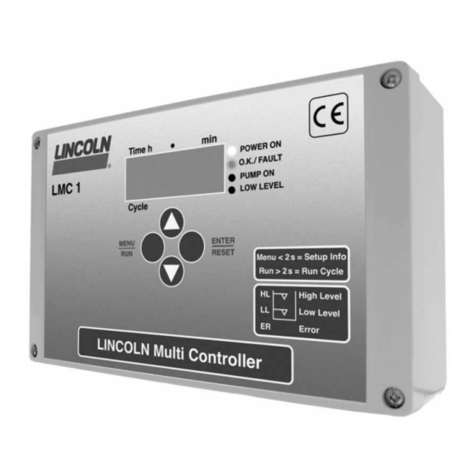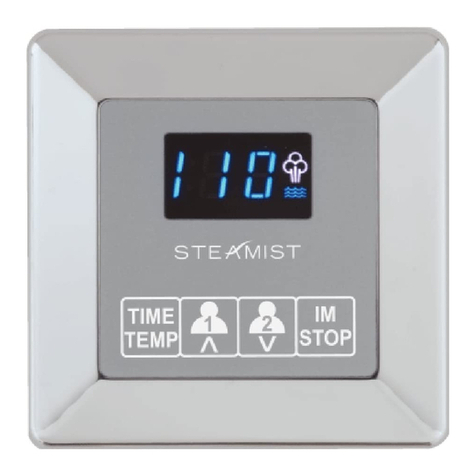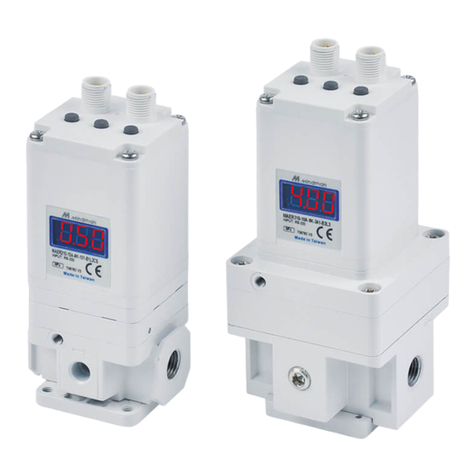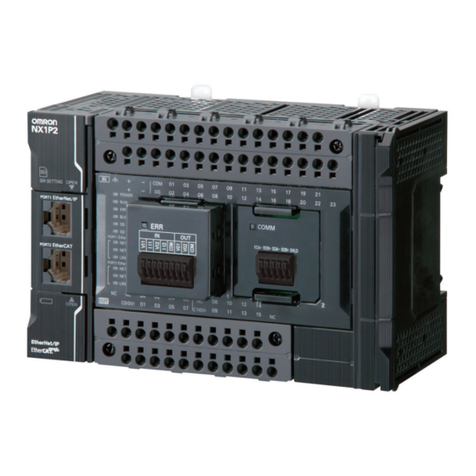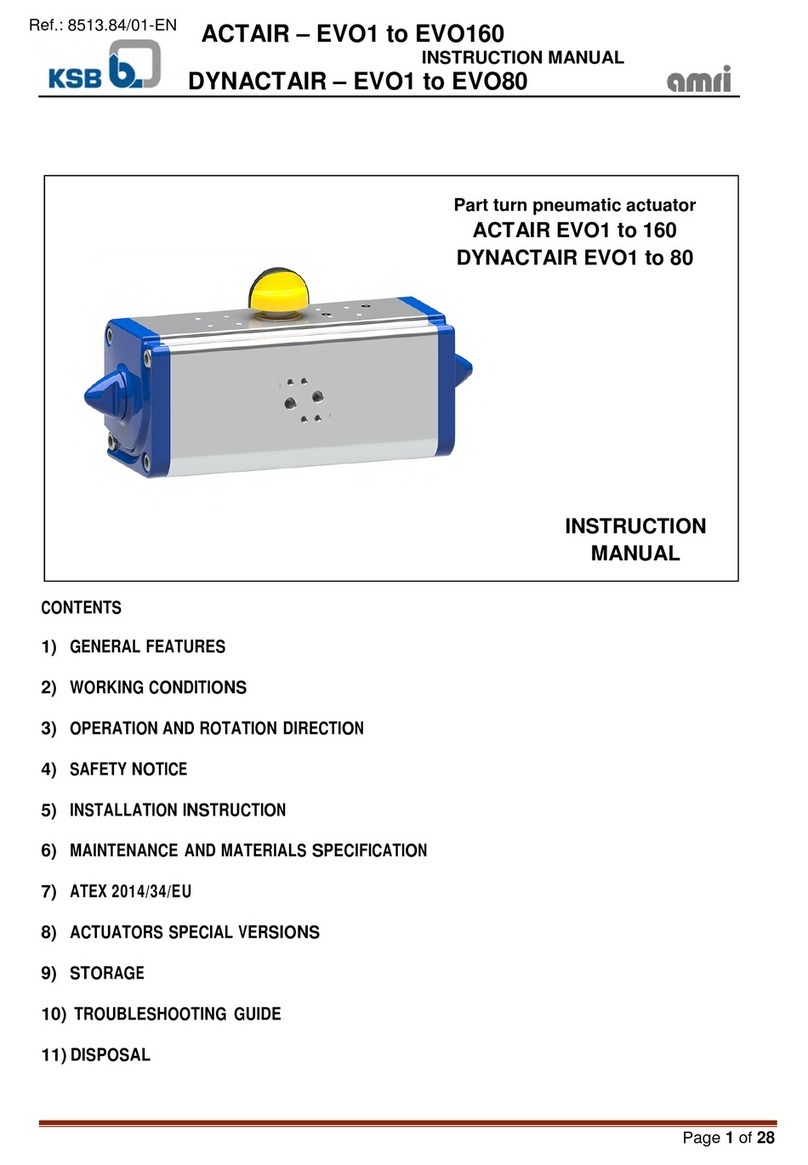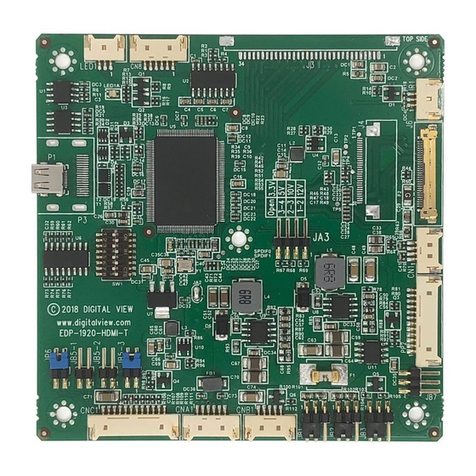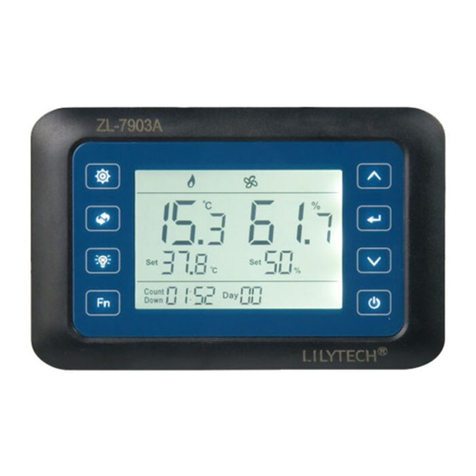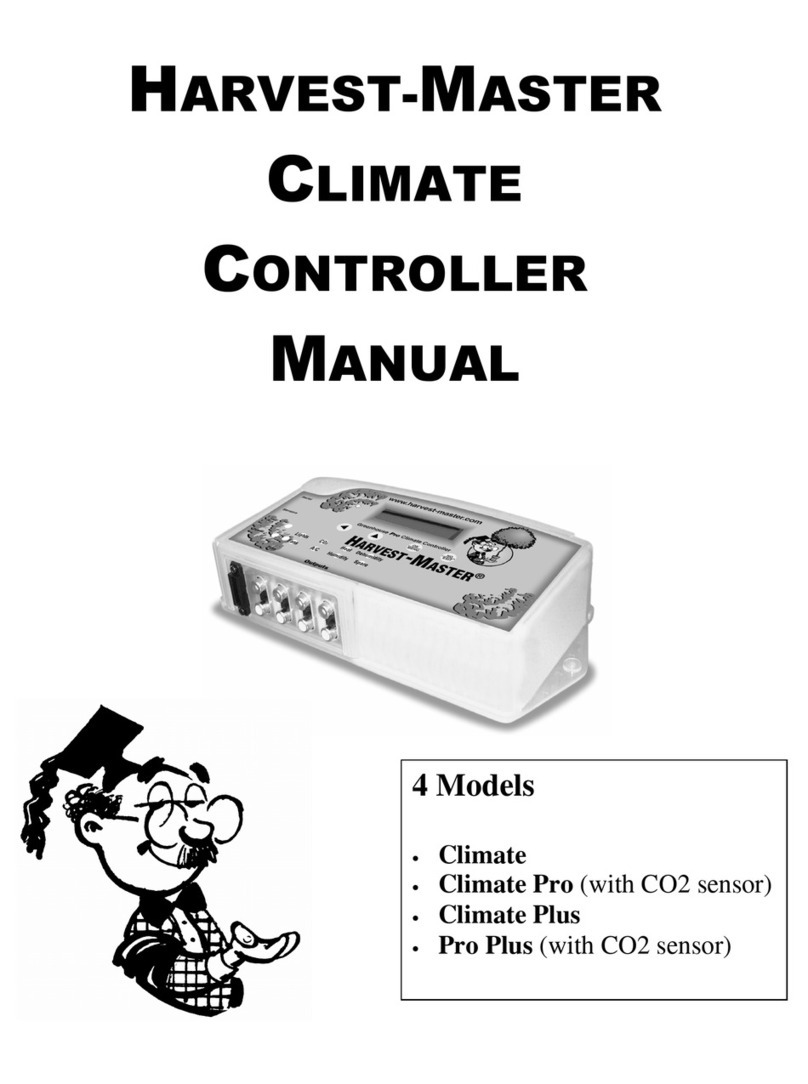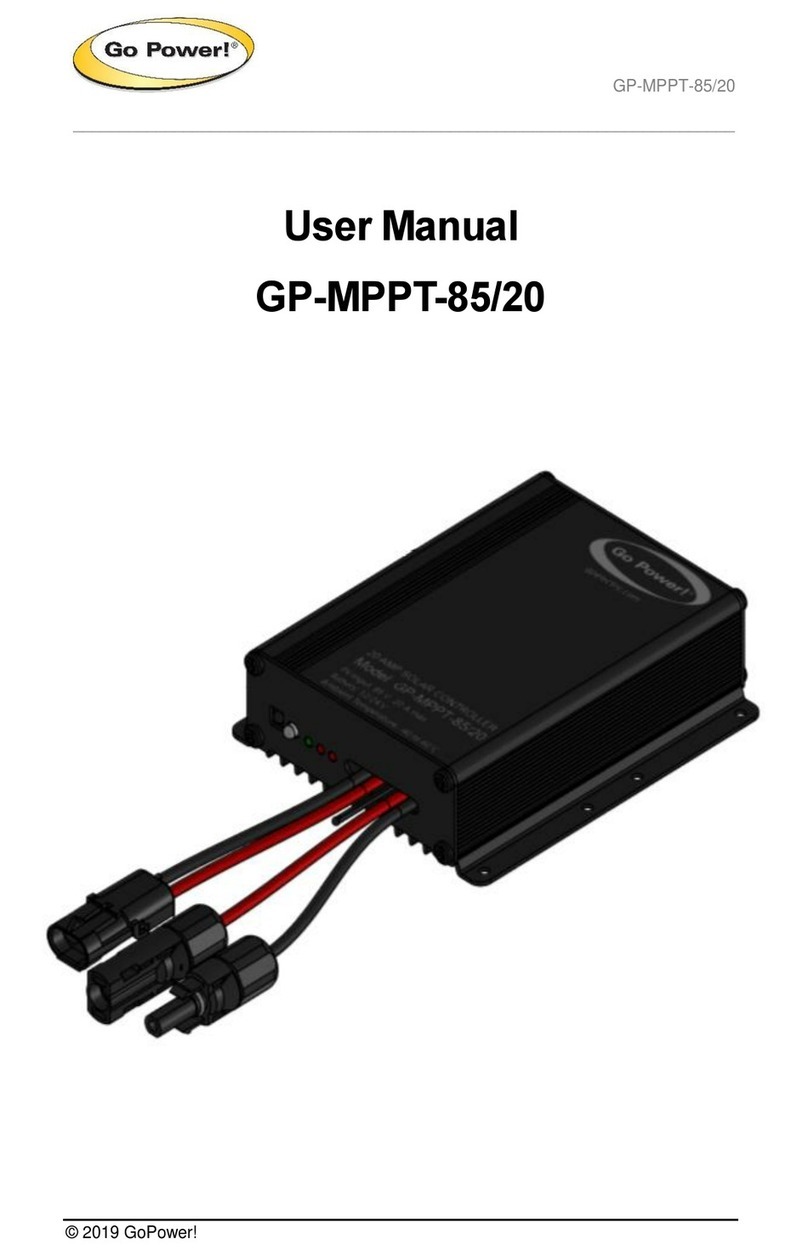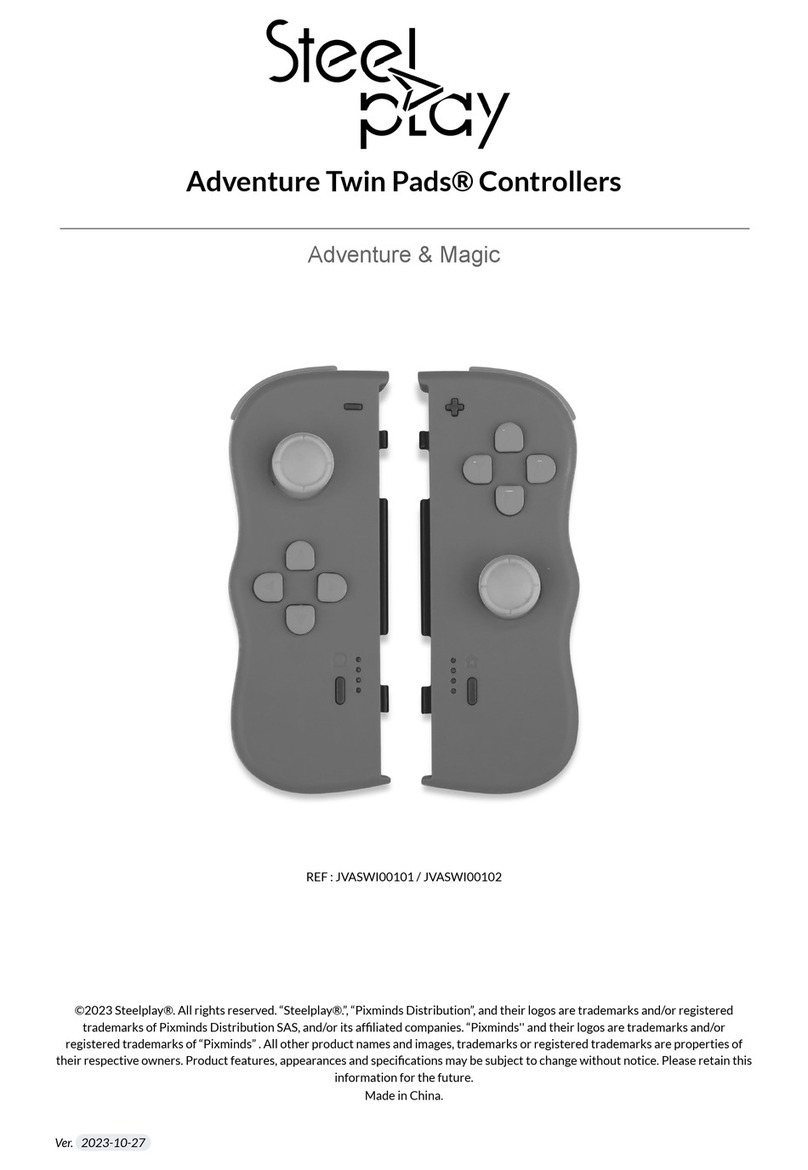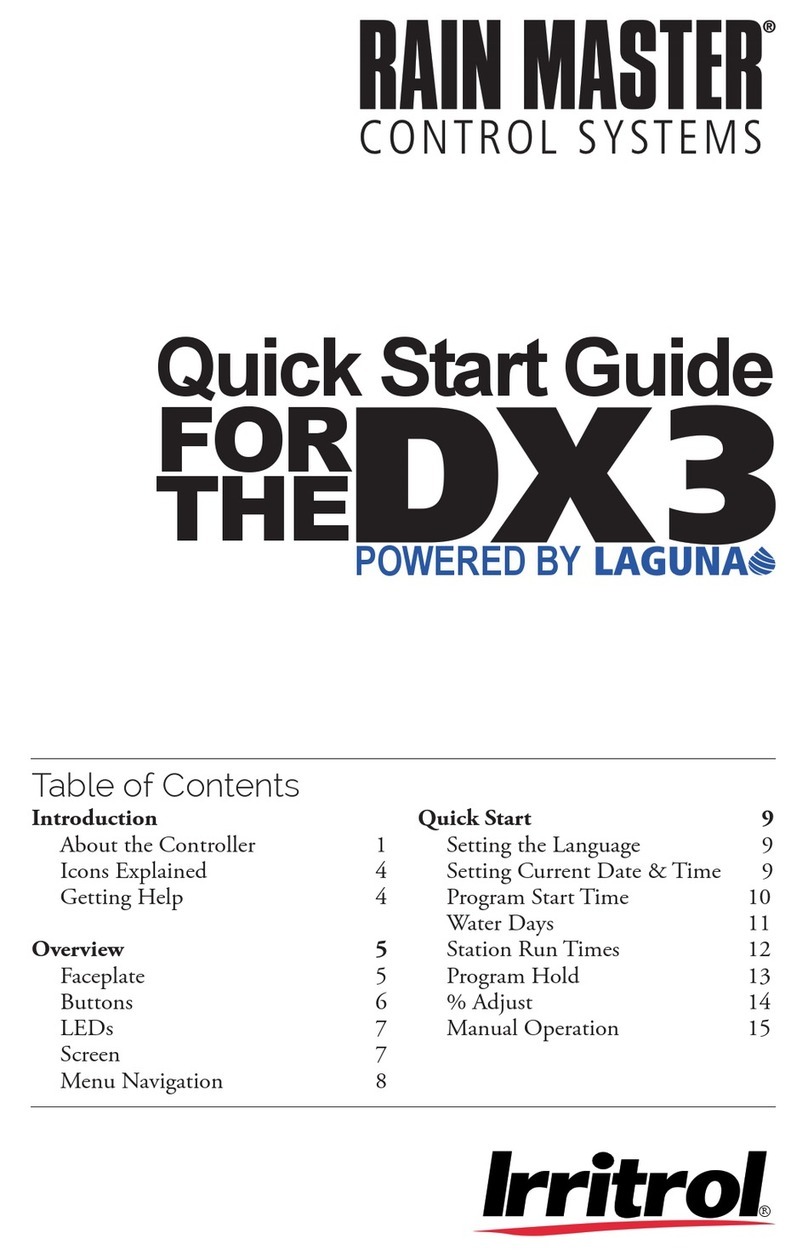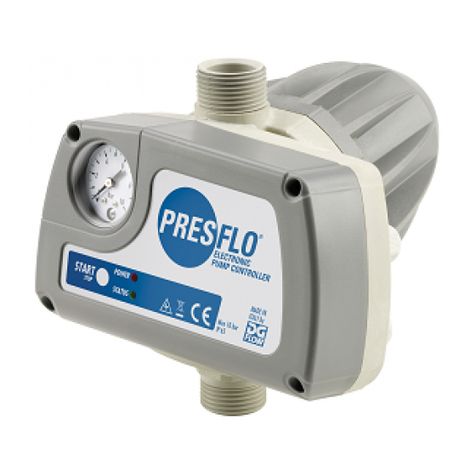Lincoln SKF eLube DataLog 85139 Instruction Manual

User and maintenance instructions
Model
SKF eLube DataLog controller
Date of issue December
Form number
Version

Contents
Safety . . . . . . . . . . . . . . . . . . . . . . . . . . . . . . . . . . . . . . . . . . . . . .
Operational precautions . . . . . . . . . . . . . . . . . . . . . . . . . . . . . .
FCC information. . . . . . . . . . . . . . . . . . . . . . . . . . . . . . . . . . . . . .
Description . . . . . . . . . . . . . . . . . . . . . . . . . . . . . . . . . . . . . . . . .
Front panel information and component identification . . . . . . . .
Specifications . . . . . . . . . . . . . . . . . . . . . . . . . . . . . . . . . . . . . . . .
Key ignition mode . . . . . . . . . . . . . . . . . . . . . . . . . . . . . . . . . . . .
Heavy working mode . . . . . . . . . . . . . . . . . . . . . . . . . . . . . . . . .
Component identification . . . . . . . . . . . . . . . . . . . . . . . . . . . . . . .
LED code descriptions . . . . . . . . . . . . . . . . . . . . . . . . . . . . . . . . .
Installing controller . . . . . . . . . . . . . . . . . . . . . . . . . . . . . . . . . .
Front panel configuration . . . . . . . . . . . . . . . . . . . . . . . . . . . . .
Default settings. . . . . . . . . . . . . . . . . . . . . . . . . . . . . . . . . . . . . .
eLube controller defaults . . . . . . . . . . . . . . . . . . . . . . . . . . . . . . .
Single line . . . . . . . . . . . . . . . . . . . . . . . . . . . . . . . . . . . . . . . . . . .
Single line . . . . . . . . . . . . . . . . . . . . . . . . . . . . . . . . . . . . . . . . . . .
Progressive line. . . . . . . . . . . . . . . . . . . . . . . . . . . . . . . . . . . . . . .
Progressive line. . . . . . . . . . . . . . . . . . . . . . . . . . . . . . . . . . . . . . .
Wiring examples . . . . . . . . . . . . . . . . . . . . . . . . . . . . . . . . . . . . .
Single line w/ pressure switch, external indicator,
and low level input . . . . . . . . . . . . . . . . . . . . . . . . . . . . . . . . . . . .
Progressive line system with proximity sensor, external
indicator, low level input, key ignition. . . . . . . . . . . . . . . . . . . . . .
Accessories . . . . . . . . . . . . . . . . . . . . . . . . . . . . . . . . . . . . . . . . . .
Single line with proximity switch, external indicator, and low
level sensor. Diagram depcts use of optional high current relay.
Replace fuse . . . . . . . . . . . . . . . . . . . . . . . . . . . . . . . . . . . . . . . .
Replacing fuse. . . . . . . . . . . . . . . . . . . . . . . . . . . . . . . . . . . . . . . .
Connecting SKF eLube Datalog controller to SKF eLube app
Adjusting system parameters within SKF eLube app . . . . . . .
Datalog within SKF eLube app . . . . . . . . . . . . . . . . . . . . . . . . .
Warranty . . . . . . . . . . . . . . . . . . . . . . . . . . . . . . . . . . . . . . . . . . . .

FCC information
Contains FCC ID:QOQBGM.
Contains IC: A-BGM.
CAUTION
Do not operate equipment without
wearing personal protective gear.
Wear eye protection. Protective
equipment such as dust mask, non-skid
safety shoes, hard hat, or hearing pro-
tection used for appropriate conditions
will reduce personal injuries.
Failure to comply may result in light
personal injury.
WARNING
Do not allow any body part
to be trapped by equipment.
Body parts can be crushed
by subassemblies during
operation.
Failure to comply may result in death
or serious physical injury.
WARNING
Do not allow fluid to leak
onto floor when operating
equipment. If spill occurs,
clean any fluid on floor before continuing
operation.
Failure to comply may result in death
or serious personal injury.
WARNING
Do not use this equipment to supply,
transport, or store hazardous
substances and mixtures in accordance
with annex I part - of the CLP
regulation (EG /) or HCS
CFR . marked with GHS,
GHS and GHS hazard pictograms
shown:
Explanation of signal
words for safety
NOTE
Emphasizes useful hints and
recommendations as well as
information to prevent property damage
and ensure efficient trouble-free
operation.
CAUTION
Indicates a dangerous situation that can
lead to light personal injury if
precautionary measures are ignored.
WARNING
Indicates a dangerous situation that
could lead to death or serious injury if
precautionary measures are ignored.
DANGER
Indicates a dangerous situation that will
lead to death or serious injury if
precautionary measures are ignored.
WARNING
Do not operate equipment
without reading and fully
understanding safety
warnings and instructions.
Failure to follow warnings and
instructions may result in serious injury.
Safety
Read and carefully observe operating
instructions before unpacking and operating
equipment. Equipment must be operated,
maintained and repaired exclusively by
persons familiar with operating instructions.
Local safety regulations regarding
installation, operation and maintenance
must be followed.
Operate equipment only after safety
instructions and this service manual are
fully understood.
Operational
precautions
User must have total understanding of
controller specifications. Never connect any
other voltage supply other than specified in
manuals contained within.
Operator/owner must ensure installation
or inspections are executed by authorized
personnel who have thoroughly read
operating instruction manual.
Switch machine off before performing any
setup or work on controller. Position
machine so no harm can be caused to any
person should machine be switched on
during setup of controller. Operator or
personnel working on machine must be
advised in the event machine needs to be on
for setup of controller.
Never switch machine on without prior
knowledge of operator/owner or someone
with full knowledge of machines operation.

A A
1
2
3
4
5
6
7
8
13
12
11
9
10
14
16
View A-A
17
18
19 20 21
22
23
15
Table
Specifications
Voltage V to V nominal
Current drain mA (no load)
Current drain (standby mode) mA maximum
Output capacities
Pump output, pin main connector A max
Pump output, high current relay A max
External indicator output, connector A maximum
Switching Solid state short circuit protected
Fuse V A mini blade (SAE J)
Connections Main connector: way Molex mini fit JR
Communications Bluetooth
Dimensions . x . x . in (81 x 130 x 36 mm)
Weight . lbs (166 g)
Environment Indoors/ in cab
Protection IP
Operating temperature - to °F (-40 to 66 °C)
Description
Controller is a universal electronic unit
designed to control automated lubrication
systems and collect log files.
Single line parallel and progressive sys-
tems can be controlled by this controller.
Configurations can be set using the SKF
eLube mobile app Bluetooth or the
pushbutton interface.
The controller is designed to be used
inside the driver’s cabin for mobile equip-
ment as well as for indoor industrial use.
The SKF eLube app is available for Android
and Apple devices. It can be downloaded
through the appropriate app store.
Owner/operator should be familiar with
electrical equipment and the lubrication
system prior to operating.
Fig.
Front panel information and component identification

Table
Component identification
Item Description Purpose
Indicators: control status
Power indicator Lit when controller is powered on
Bluetooth indicator Lit when Bluetooth is connected
Configuration mode indicator Lit when controller is in setup mode
Pump running: progressive timed
mode indicator
Lit when pump is running in progressive timed mode.
Pump running: progressive cycle
mode indicator
Lit when pump is running in progressive cycle mode.
Pump running: single line pressure
mode indicator
Lit when pump is running in single line pressure mode.
Pause state indicator Lit when pump is in pause state.
Mute alarm indicator Lit when controller is in error state and buzzer sounding. Press left menu navigation key to mute.
Fault state indicator Lit when controller is in fault state. Alarm will sound.
Low lubricant level indicator Lit when low lubricant level is detected. Alarm will sound.
Normal/heavy mode indicator Indicates if the controller is in normal or heavy running mode. One droplet lit indicates normal running
mode. Two droplets lit indicate heavy running mode.
Function keys
X Menu navigation Navigates menus in configuration mode. In running mode the left navigation key controls mute and the
right navigation key controls heavy or normal running mode.
Manual lube/select Activates pump for one cycle.
Components
character display
High current relay terminal, push in spring terminal block, - AWG
Main connector, way
Main connector identification
Pump motor connection
Reservoir low level connection
External indicator connection
Sensor connection
Sensor connection
Remote ignition connection
Power supply connection
Key ignition mode
Controller features a key ignition mode.
With “Ignition Input Present?” set to “Yes”,
the controller will be in a standby mode until
voltage is present at the ignition wire. When
voltage is present at ignition wire, the con-
troller resumes normal lubrication opera-
tion. In standby mode, the controller can
communicate to the eLube app and can be
configured by the push button interface.
When the key switch is turned “On”, the
controller resumes normal lubrication
operation.
With “Ignition Input Present?” set to “No”,
then the controller only uses the battery
power input. It is either completely off, or it is
on and in normal lubrication operation.
Heavy working mode
Controller features a Heavy Working Mode
that can be quickly enabled or disabled when
entering environments that require addi-
tional lubrication. This can be done by
selecting the right navigation key on the
controller. With Heavy Working Mode active,
the pause time can be reduced according to
the desired setting. The Heavy Working
Mode state will be retained through power
cycles.
NOTE
Do not exceed system voltage at IGN- pin.
If controller is expected to remain in
standby mode for over weeks, it is
suggested to install a battery disconnect
on the system.

Table
LED code descriptions
Panel display Description
run Run time. In timed mode, this defines the pump run time per lubrication cycle. In switch mode, this defines pump max run time
until an error is signaled.
Pt Pause time. Defines pause time between lubrication cycles.
HPt Heavy mode pause time. Defines pause time while controller is in heavy mode state.
runC Run control menus. Initiates run control settings. Single line see PrS, PrS, and Mod. Progressive see Pro, Pro, and Mod.
PrS Pressure switch . Define pressure switch state. N/O or N/C.
PrS Pressure switch . Activate/de-activate pressure switch and define pressure switch state. OFF, N/O, or N/C.
Pro Proximity switch . Define number of proximity switch cycles during a lubrication cycle. -.
Pro Proximity switch . Define number of proximity switch cycles during a lubrication cycle. -.
Mod Mode setting. Defines controller run mode for progressive systems. Switched or timed modes.
PreL Prelube control. Initiates prelube control settings. See on, HrS and OFF.
On (PreL menu) Prelube On. A prelube cycle will always occur during power up.
HrS Prelube hours. A prelube cycle will occur when power has been off for longer than hours.
OFF Prelube off. A prelube cycle will not occur during power up.
LL Low level input. Defines normal low level switch state.
Err Error notification. Initiates error notification settings. See LL, PrE, and Err.
LLer Low level switch error. Defines number of lubrication cycles, after error input, before entering fault state. The approrpriate light will
illuminate on controller but lubrication cycles will continue until set value of cycles is reached. Upon reaching set value, the con-
troller will enter fault state, seize lubrication cycles, and alarm will buzz. -. will prevent controller from entering fault state
allowing for continued operation.
PrEr Proximity or pressure switch error. Defines number of lubrication cycles, after error input, before entering fault state. Appropriate
light will illuminate on controller but lubrication cycles will continue until set value of cycles is reached. Upon reaching set value ,
the controller will enter fault state, seize lubrication cycles, and alarm will buzz. -. will prevent controllerfrom entering fault state
allowing for continued operation.
Eout Error relay output. Define error output state. N-O or N-C .
IGn Ignition mode. No/Yes
FILL Status message: Controller is in fault state due to a reservoir sensor signal.
Err Status message: Controller is in fault state due to lube cycle error.
bUSy Status message: Controller can not be configured from the push button overlay while the pump is running.
IGn/OFF Status message: Controller entering ignition standby mode.
HI P Status message: Controller did not start lube cycle due to residual pressure in lubrication line.
Installing controller
The includes a sample of re-usable
fasteners to allow installation at the install-
er’s discretion. The fastener is sized to be
positioned on the back side of the controller.
Clean both mating surfaces with mild soap
and allow to completely dry. Peel tape from
fastener and press firmly into place on back
of controller.
NOTE
Do not clean controller with acetone.

Table
Single line
Menu level Menu level Menu level Menu level Notes
Single line
(SL)
Max run time (run) Set time (MM:SS) Time limits:
Days: -
Hours: -
Minutes: -
Seconds: -
Minimum time: seconds
Max run time: minutes seconds
All other max times: days, hrs
Inputs outside of these limits will result in an error.
Pause time (Pt) Set time (DD:HH:MM:SS)
Heavy mode pause time (HPt) Set time (DD:HH:MM:SS)
Run time control (runC) Pressure switch (PrS) Normally closed (n-C)
Normally open (n-O)
Pressure switch (PrS) Off (OFF) When using pressure switches, both must
switch to desired state to complete the
lubrication cycle.
Normally closed (n-C)
Normally open (n-O
Prelube (PrEL) On (On)
Every hours (HrS)
Off (OFF)
Low level input (LL) Normally open (n-O)
Normally closed (n-C)
Error notification (Err) Low level error (LLEr) - LLEr and PrEr notes::) The number of additional
lubrication cycles allowed after a lubrication
fault. A “” represents that as soon as there is a
lubrication fault, controller enters fault state. A
maximum of lubrication cycles can be allowed
after a lubrication fault. A “” will prevent con-
troller from entering a fault state.
)Errors will be reset upon completion of next
successful lubrication cycle in which no error
signals are received.
) If controller is in fault state, errors can be
cleared by selecting the manual lubrication
button.
Pressure error (PrEr) -
External indicator out (EOut) Normally open (n-O)
Normally closed (n-C)
Ignition mode (IGn) No (no)
Yes (yES)
Front panel
configuration
Configure controller using the front panel
push-button interface.
Enter or exit settings mode by pressing
the up and down navigation keys at the
same time. The controller will follow a set of
rules to navigate through the menu detailed
in tables and , page and figs. and ,
pages and .
Right navigation key will advance a menu
level.
Left navigation key will save and return to
the previous menu level.
• Heavy pause time = minutes
• Pre-lube mode = always
• Control mode = switch
• Proximity switch =
• Proximity swith =
• Pressure switch = N-O
• Pressure switch = Off
• Working cycle retries after low
level warning =
• Cycles allowed past lube system fault =
• Alarm output = normally open
• Low level input = normally open
• Ignition input present? = No
The up/down navigation keys will change the
current selection and adjust values when
applicable.
Unauthorized access to settings mode can
be controlled by the use of a PIN password.
The PIN must be set within the SKF eLube
app. While in the PIN lock menu, PIN input
can be checked by using the manual lube/
select key.
Default settings
eLube controller defaults
• System type = Progressive
• Max run tim = minutes.
• Pause time - minutes

Digit
2
Digit
1
Digit
3
Digit
4
Pin input
Hour
Day
D/H/M/S:XY
Min Sec
See progressive config
Max run time Time setting input (MM:SS)
Default 02:00
Pause time Time setting input (DD:HH:MM:SS)
Default 00:00:30:00
Heavy mode pause time
Save and
return
Time setting input (DD:HH:MM:SS)
Default 00:00:15:00
Run time control Runtime control selection
Pressure switch 1
Pressure switch 2
Pressure switch 2 setting
Normally closed
Normally open
Off (Default)
Prelube Prelube setting
Always (Default)
Every 3 hours
Off
Low level input Low level input setting
Normally open (Default)
Normally closed
Error notification Error notification selection
Low level switch error
Pressure switch error
External indicator out
LL switch error setting
See note 1 and 2
Set XY 0-11
External indicator out setting
Normally closed
Normally open (Default)
Ignition input Ignition input setting
No (Default)
Yes
System type selection
Single line
Progressive line
Pressure switch 1 setting
Normally open
Normally closed (Default)
Pressure switch error setting
See note 1 and 2
Set XY 0-11
Pin configured
Pin not configured SL
Pro
Time setting input
Correct
Incorrect (Err)
Save and
return
Save and
return
Save and return
Return
Save and
return
Save and
return
Return
Save and
return
Save and return
Save and return
Save and return
Save
and
return
Fig.
Single line
NOTE
) The number of additional
lubrication cycles allowed after a
lubrication fault. A “” represents that
as soon as there is a lubrication fault,
controller enters fault state. A
maximum of lubrication cycles can
be allowed after a lubrication fault. A
“” will prevent controller from
entering a fault state.
) Errors will be reset upon comple-
tion of next successful lubrication
cycle in which no error signals are
received.
) When using pressure switches,
both must switch to desired state to
complete the lubrication cycle.

Table
Progressive line
Menu level Menu level Menu level Menu level Notes
Progressive (Pro) Max run time (run) Set time (MM:SS) Time limits:
Days: -
Hours: -
Minutes: -
Seconds: -
Minimum time: seconds
Max run time: minutes seconds
All other max times: days, hrs
Inputs outside of these limits will result in an error.
Pause time (Pt) Set time (DD:HH:MM:SS)
Heavy mode pause time (HPt) Set time (DD:HH:MM:SS)
Run time control (runC) Mode (Mod) Switch (SWt)
Times (tIM)
Proximity switch (Pro) - Prox switch is the controlling switch.
Proximity switch (Pro) - Prox switch is for monitoring only. Set to to turn
off functionality.
Prelube (PreL) On (On)
Every hours (HrS))
Off (OFF)
Low level input (LL) Normally open (n-O)
Normally closed (n-C)
Error notification (Err) Low level error (LLEr) - The number of additional lubrication cycles allowed
after a lubrication fault. A “” represents that as soon
as there is a lubrication fault, controller enters fault
state. A maximum of lubrication cycles can be
allowed after a lubrication fault. A “” will prevent
controller from entering a fault state.
Proximity switch error
(PrEr)
-
External indicator out
(EOut)
Normally open
(n-O)
Normally closed
(n-C)
Ignition mode (IGn) No (no)
Yes (yES)

Digit
2
Digit
1
Digit
3
Digit
4
Pin input
Hour
Day
D/H/M/S:XY
Min Sec
See single line config
Max run time Time setting input (MM:SS)
Default 02:00
Pause time Time setting input (DD:HH:MM:SS)
Default 00:00:30:00
Heavy mode pause time Time setting input (DD:HH:MM:SS)
Default 00:00:15:00
Run time control
Prelube Prelube setting
Always (Default)
Every 3 hours
Off
Low level input Low level input setting
Normally open (Default)
Normally closed
Error notification Error notification selection
Low level switch error
Pressure switch error
External indicator out
Ignition input Ignition input setting
No (Default)
Yes
System type selection
Single line
Progressive line
Run time control selection
Mode
Proximity switch 1
Proximity switch 2
Mode setting
Switch
Timed
Proximity switch 2 setting
See note 3
Set 0-99 (Default 0)
Proximity switch 1 setting
Set 1-99
LL switch error setting
See notes 1 and 2
Set XY 0-11
External indicator out
setting
Normally closed
Normally open (Default)
Pressure switch error setting
See notes 1 and 2
Set XY 0-11
Pin configured
Pin not configured SL
Pro
Time setting input
Correct
Incorrect (Err)
Save and
return
Save and
return
Save and
return
Return
Save and
return
Save and
return
Return
Save and
return
Save and return
Save and return
Save and
return
Save and return
Save and return
Save and
return
Fig.
Progressive line
) The number of additional lubrication cycles allowed after a lubrication fault. A “” represents that as soon as there is a lubrication fault, controller enters fault state. A maximum of lubrication cycles can
be allowed after a lubrication fault. A “” will prevent controller from entering a fault state.
) Errors will be reset upon completion of next successful lubrication cycle in which no error signals are received.
) When using proximity switches, proximity switch is controlling switch & proximity switch is for monitoring purposes only.

Progressive line system w/ proximity
sensor, external indicator, low level
input, key ignition
Single line system with pressure switch, external indicator, &
low level sensor. Diagram depicts use of optional high current
relay.
Side relay connection
N/O
Motor
Fig.
Single line w/ pressure switch, external indicator, and low level input
Fig.
Single line with pressure switch, external indicator, and low level
sensor. Diagram depcts use of optional high current relay.
Fig.
Progressive line system with proximity sensor, external indicator, low level input, key ignition
Wiring examples
Accessories
Part number Description
Wiring harness, eLube pin connector to bare ware, ft (4.9 m)
Wiring adapter harness, eLube pin connector to pin Molex, ft (0.31 m)
length.

Replace fuse
WARNING
Do not open controller with power
supply to controller on. Turn power off
prior to opening.
Failure to comply will result in death
or serious injury.
Fig. 7
Replacing fuse
1 Remove screws (1) located on back of
controller.
2 Remove and replace mini blade fuse (2).
3 Install back plate
4 Install screws () into back of controller.

Fig. 8
Connecting SKF
eLube Datalog
controller to SKF
eLube app
1 Download app from respective app store
(available for Android and Apple
environments).
2 Power on SKF eLube DataLog controller
3 Open SKF eLube app, the text “Lube sys-
tems nearby” will be visible towards the
top of the page.
4 Select desired eLube DataLog controller to
connect.
NOTE
The name of each controller can be
changed within the app.

Fig. 9 Fig. 10
Adjusting system
parameters within
SKF eLube app
1 Select settings tab.
2 Select Edit to open the change settings
menu.
3 Adjust settings as desired.
NOTE
Configurations that were previously
saved into the repository can be loaded.
4 Select apply to update parameters to the
connected SKF eLube DataLog controller.
NOTE
Configurations can be saved into the
repository for later use.

Fig. 11
Datalog within SKF
eLube app
The controller features the ability to datalog
events and errors. This datalog can be
viewed and exported from the SKF eLube
app. Events consist of notifications about the
controller’s state and errors include lubrica-
tion faults.

skf.com | lincolnindustrial.com
® SKF, Lincoln and SKF eLube are registered trademarks of the SKF Group.
© SKF Group
The contents of this publication are the copyright of the publisher and may not be reproduced (even
extracts) unless prior written permission is granted. Every care has been taken to ensure the accuracy
of the information contained in this publication but no liability can be accepted for any loss or damage
whether direct, indirect or consequential arising out of the use of the information contained herein.
December · Form Version
Warranty
The instructions do not contain any information on the warranty.
This can be found in the General Conditions of Sales, available at:
www.lincolnindustrial.com/technicalservice or www.skf.com/lubrication.
Table of contents
Other Lincoln Controllers manuals
